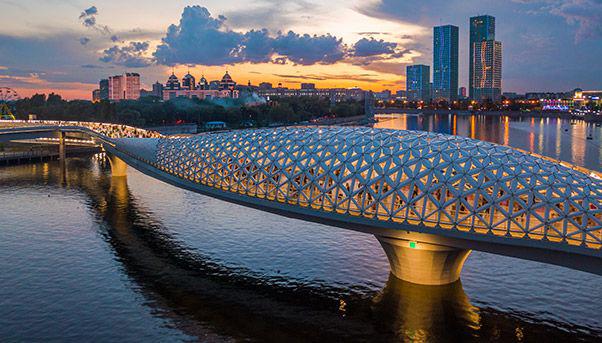
In acknowledgement of the benefits of investing in the idea of a New Silk Road, the foreign ministers of the 28 member states of the European Union on October 15 approved a Euro-Asian connectivity strategy during the 12th annual intergovernmental Asia-Europe Meeting in Brussels.
The strategy will offer €60 billion in loan guarantees to help develop Asia’s infrastructure, with a focus on transport and energy projects that can do the most to boost trade between the region and the EU.
Competition with China
Looking at the details of the strategy, China’s ambitious Belt and Road Initiative to invest in infrastructure comes immediately to observers’ minds. The competition by China President Xi Jinping is one of the unmentioned reasons driving the EU strategy because member states appear to fear they may be elbowed out of one of the fastest-growing areas in the world.
According to the Asian Development Bank, 45 developing countries in the Asia-Pacific region need $1.7 trillion in annual investment to close its infrastructure gap. Competition to scoop up the most important projects is getting intense, with Chinese, Japanese and U.S. companies at the front of the line.
So that is why the Euro-Asian connectivity strategy looks like an alternative to China’s Belt and Road Initiative, with the difference being that more attention will be paid to the sustainability of the projects to be financed.
«The Euro-Asian connectivity strategy is ‘implicitly’ in competition with China and is part of a broader push by the EU to show a united front on China policy», said Frans-Paul van der Putten, senior researcher at Clingendael, the Netherlands Institute of International Relations, told the South China Morning Post newspaper in an interview.
The European Commission’s idea is to propose a set of infrastructure connections that can be built in countries that have been left on the sidelines by Xi Jinping’s Belt and Road Initiative. Among these are the United States and Canada, which have only been partially involved in the region’s infrastructure development.
To increase European influence, almost all of the €60 billion announced will be targeted to build infrastructure projects located in Asia.

Europa and Asia: an economic bond to be strengthened
In Brussels, leaders are convinced that a strong bond between the EU and Asia already exists, and that it can become even stronger. Annual trade flows between the EU and Asia have reached €1.5 trillion, and the EU High Representative for Foreign Affairs Federica Mogherini said the strategy would help quadruple the amount of European investments in Asia.
The strategy, approved by the Commission, will be voted on by the European Parliament in 2019 and is scheduled to be up and running by the end of 2021.
In the meantime, other world leaders are moving rapidly to consolidate their industrial influence in the region. During the summer, the U.S. government announced it would spend $113 million in Asian infrastructure, particularly in the energy sector. At the Mekong-Japan Summit in Tokyo at the start of October, Japan Prime Minister Shinzo Abe proposed a list of 150 ambitious infrastructure projects to be built in South East Asia. The market is simply too large and too important not to attract the interest of governments and the leading industry players. But there is another reason that motived the European Commission to push for the plan’s approval. The EU needs to defend itself from the Chinese business thrust into the continent. China’s biggest state-owned groups have bought control of ports in Belgium, Spain, Italy and Greece, and are involved in a few large infrastructure projects like building a highway in Montenegro (at a cost equal to 25% of the country’s 2017 GDP).
These are important first signs of China’s interest in the European market. An alarm bell for Europe’s leading construction firms, which can hope that the EU’s effort will help them do the same in Asia, taking part in the ambitious building projects that are changing the face of the continent.

